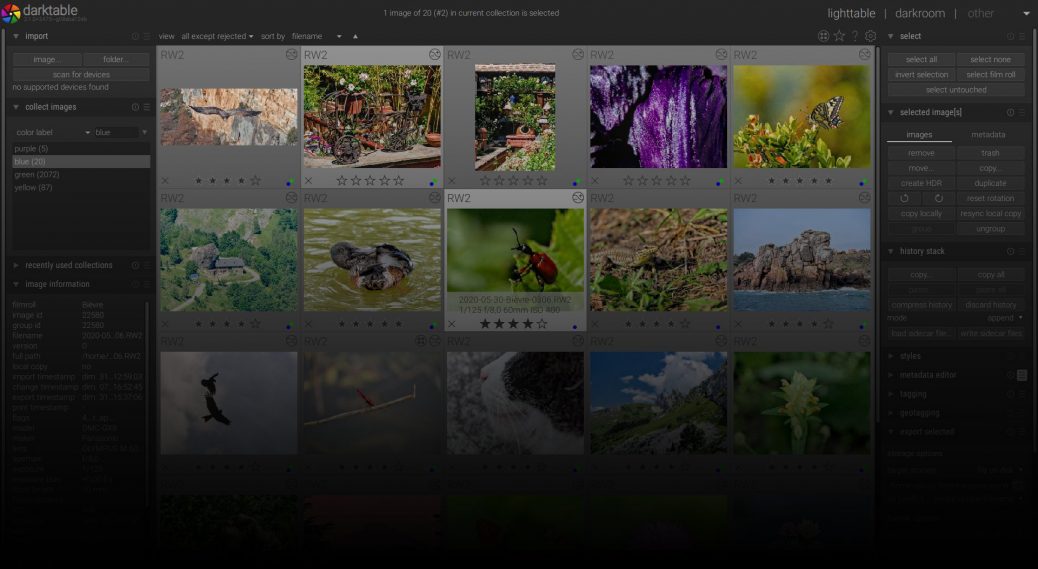Open Source Darktable Unveils the Major Updates 4.0
Just about a year after releasing darktable 3.6, the darktable team announces version 4.0. The update celebrates ten years of darktable offering photographers open source raw image editing. Developer Pascal Obry has published a detailed changelog for Darktable 4.0 that lists a huge range of new features and bug fixes, including new color science tools and a totally new user interface.
The first notable change involves new color science tools, specifically color and exposure mapping. These enable users to define a target color or exposure in order to match that color with a source object in the image. This feature can be used to perform white balance against non-gray objects of known color or applied across a series of images to make them more consistent.
Darktable 4.0 also brings support for what it calls Filmic v6.
The company says, “Filmic v6 introduces new color science. This change removes the mandatory desaturation close to medium white and black and replaces it with a true gamut mapping against the output (or export) color space. This allows for more saturated colors, notably in blue skies. For users who still prefer the “desaturated highlights” look, you can still do this by disabling chroma preservation, but v6 adds a hue handcuff to prevent the traditional hue shift that comes with this method (where saturated blue skies degrade to cyan and saturated red to yellow). This gamut sanitization is the third and last to be added to darktable, which now has a fully-sanitized color pipeline from input (color calibration), through artistic changes (color balance rgb) to output (filmic v6). Users can now color-grade pictures safely in the knowledge that invalid input colors can be recovered in the least destructive fashion possible early in the pipeline, and valid colors can’t be pushed out of gamut along the pipeline.”
Darktable 4.0 also adds what is referred to as the “guided laplacian” method of highlight reconstruction. Users can deploy an iterative and multi-scale wavelet scheme to bring out more details from RBG channels. This laplacian technique limits color bleeding when the color becomes clipped. This feature is only available for Bayer sensor images, not X-Trans sensor images.
Darktable 4 introduces the darktable Uniform Color Space 2022 (darktable UCS 22). It’s a perceptually uniform color space built using psychoperceptual experimental data that was gathered for artistic saturation changes. What’s this actually mean? Darktable UCS 22 ‘ uses a brightness-saturation scheme that compensates for the Helmholtz-Kohlraush effect (accounting for the contribution of colorfulness in perceived brightness) and allows an efficient gamut-mapping against pipeline RGB at a constant brightness. It will make the saturation control in color balance RGB better behaved.’
On top of those new features, 20 other bugs have been fixed in Darktable 4.0. Version 4.0 can be downloaded from Darktable and is available for Windows, macOS, and some Linux packages capable of supporting a graphical session.
More info on Darktable’s website.

